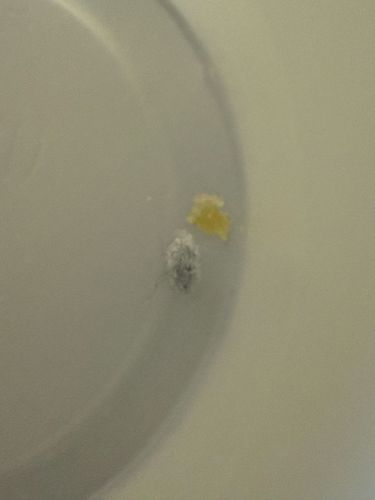Carpet Beetle Larva (possibly Varied Carpet Beetle or Black Carpet Beetle)
Scientific Name: Dermestes lardarius (Larder Beetle), Anthrenus verbasci (Varied Carpet Beetle), Attagenus unicolor (Black Carpet Beetle) - cannot specify exact species from image
Order & Family: Order: Coleoptera, Family: Dermestidae
Size: Larvae typically range from 2mm to 5mm (.08 to .2 inches) in length, depending on the species and developmental stage.

Natural Habitat
Carpet beetle larvae are typically found indoors in dark, undisturbed areas. They feed on natural fibers, upholstered furniture, wool, silk, animal products (e.g., dried pet food, leather, preserved specimens), and food crumbs. Outdoors, they can be found in bird nests, animal carcasses, and dried plant matter.
Diet & Feeding
These larvae are detritivores and opportunistic scavengers. Their diet consists primarily of keratin, a protein found in hair, wool, feathers, and skin. They also feed on dead insects, dried animal products, stored dry foods, and natural fabrics.
Behavior Patterns
Carpet beetle larvae are slow-moving and cryptic, preferring dark, hidden locations. They are often found in cracks and crevices, under furniture, or within infested materials. They undergo several molts before pupating. The bristly appearance in the image is characteristic of many Dermestid larvae, which have bristles or tufts of hair on their bodies.
Risks & Benefits
Potential risks include damage to fabrics, carpets, clothing, and other household items containing natural fibers. They can also contaminate stored food products. While generally not harmful to humans, some individuals may experience skin irritation (dermatitis) from contact with larval hairs. In nature, they play a beneficial role as decomposers, breaking down organic matter.
Identified on: 10/16/2025